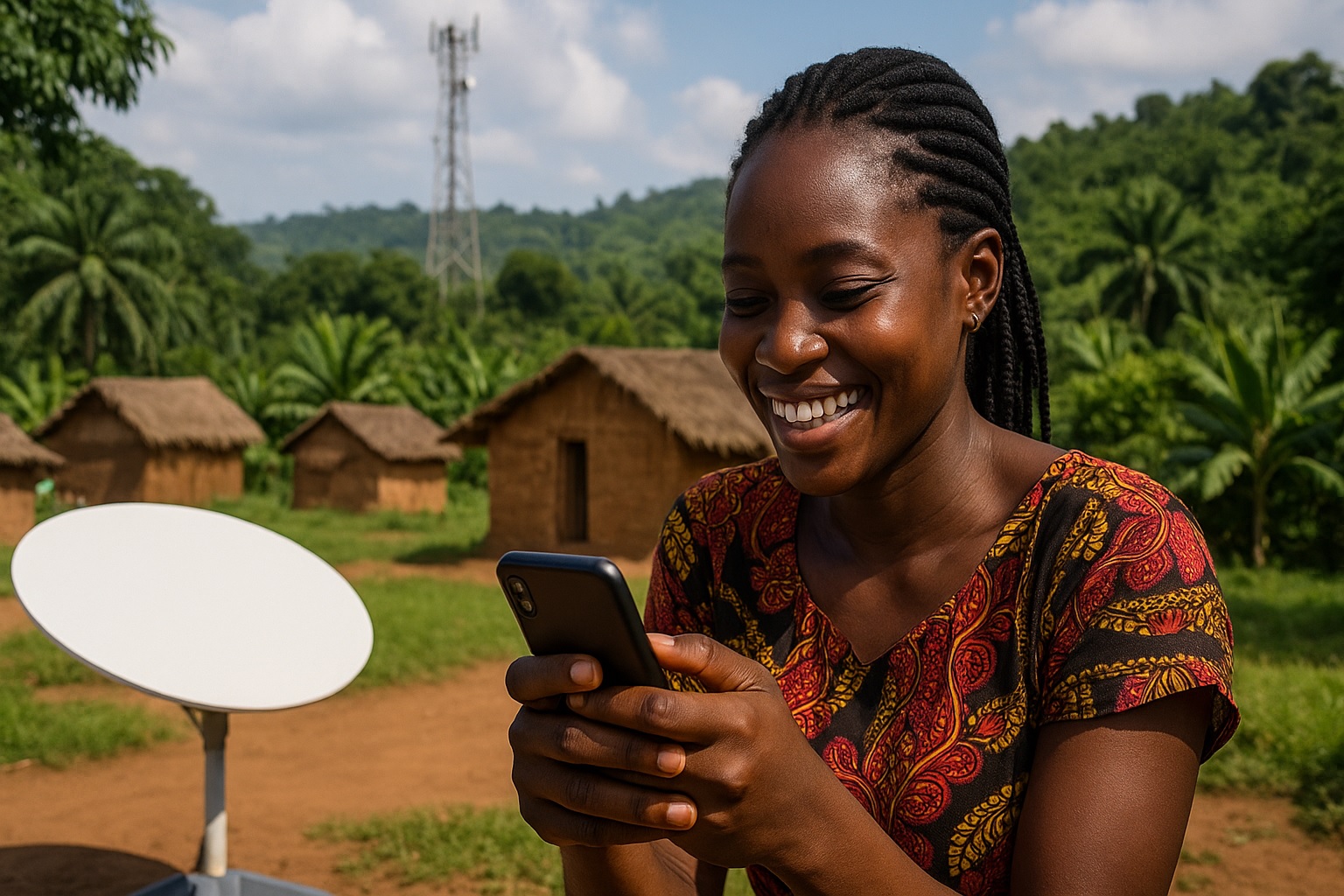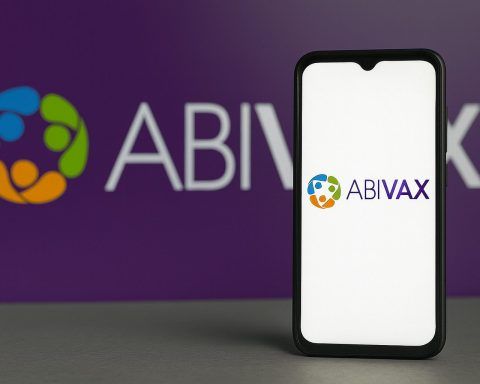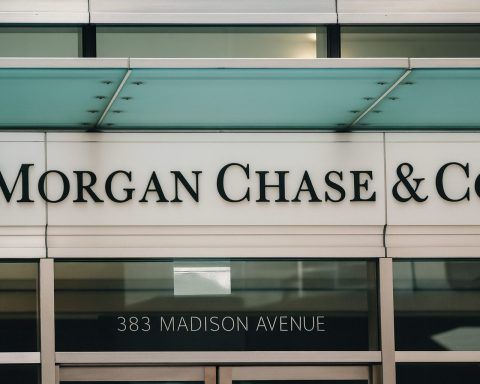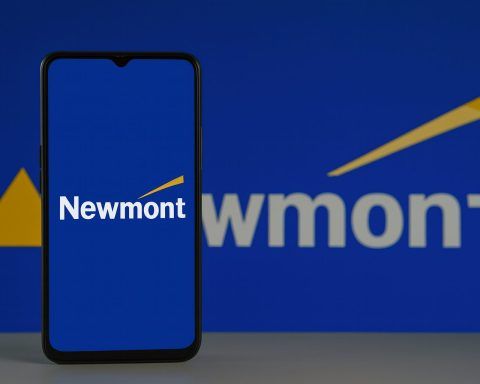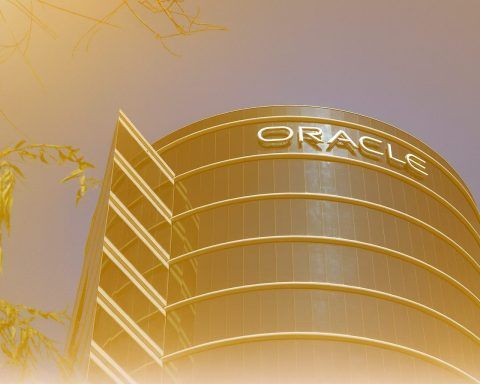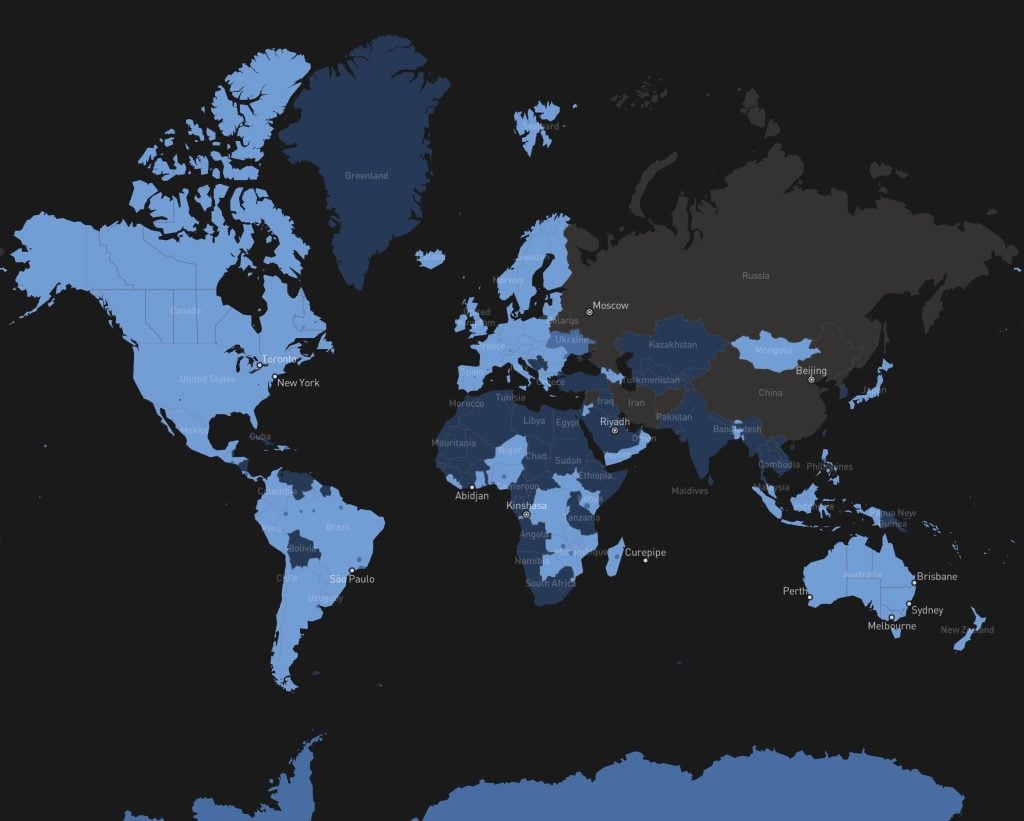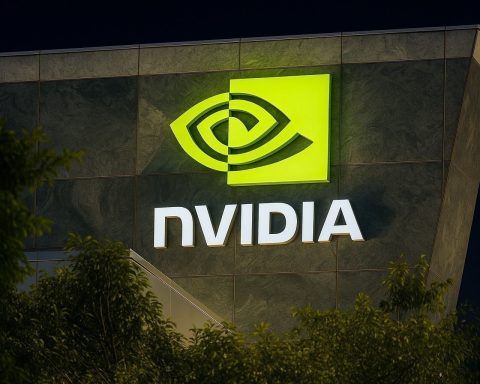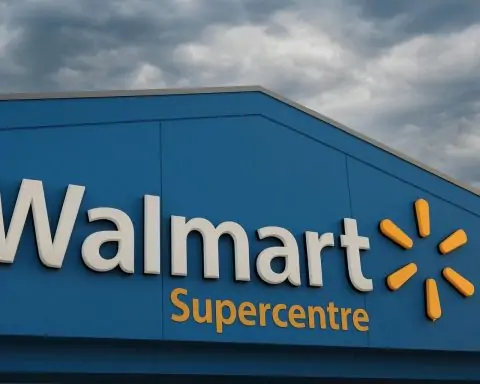- The Democratic Republic of the Congo has a population of over 100 million, but only about 27% were using the internet in early 2024, leaving roughly 75 million offline. <li Internet users rose from 1.4 million in 2013 to 28.9 million in 2023, with mobile internet subscribers jumping about 40% over three years. <li As of 2025, only 9,361 km of fiber has been laid, far short of the 50,000 km target in Horizon 2025, covering about 19% of the plan. <li The DRC’s four major mobile operators—Vodacom, Airtel, Orange, and Africell—dominate the market, with 3G/4G in major cities and Vodacom testing 5G in Kinshasa. <li As of mid-2024 there were about 59.7 million mobile subscribers and roughly 30.7 million mobile internet subscribers (about 32% penetration) across a population of around 95 million. <li The urban-rural divide is stark: about 47.7% of the population lives in urban areas with higher connectivity, while 52% in rural areas remain largely disconnected. <li Mobile data prices average about $0.88 per GB, among Africa’s cheapest, but affordability remains a barrier given a median daily income around $2.15 and basic Android phones costing $40+. <li The 2018 telecom law update created SOCOF to oversee backbone development, and a World Bank CAB5 grant of $92 million aimed to duplicate the Kinshasa–Muanda cable and extend fiber to Kisangani and Goma. <li In March 2024 the government secured a $500 million World Bank–French Development Agency package to expand internet access for 30 million more people, including towers and fiber. <li In late 2024 Orange DRC and Vodacom DRC announced a joint venture to build up to 2,000 solar-powered towers in remote areas over six years, with the first 1,000 sites online in 2025 and towers shared among operators.
Introduction – A Nation Offline
The Democratic Republic of the Congo is a country of over 100 million people, but only about 27% of the population was using the internet as of early 2024 [1]. This means roughly 75 million Congolese remain offline, a staggering digital gap in the heart of Africa [2]. For comparison, just a decade ago in 2013 there were only 1.4 million internet users in the DRC; by 2023 that number surged to 28.9 million – a 40% jump in mobile internet subscribers in three years [3]. Yet despite this growth, the vast majority of citizens still lack basic internet access. Urban residents of Kinshasa or Lubumbashi can watch YouTube or send emails, but many rural villagers live in digital darkness, cut off from the online world. What’s behind this extreme digital divide, and what is being done to bridge it? This report dives into the state of internet access in the DRC, from its threadbare infrastructure to bold new initiatives, revealing an alarming reality – and the opportunities for change.
Outdated Infrastructure: Fiber, Mobile, and Barely Any Broadband
Internet infrastructure in the DRC remains severely underdeveloped. The country’s size and history of conflict have impeded building modern networks. There is no true national fiber-optic backbone linking all provinces – most data traffic relies on aging microwave relays or satellites for backhaul beyond the capital [4] [5]. The DRC’s only undersea cable landing is via the WACS submarine cable at the west coast town of Muanda, connected by a single 3,000 km fiber line to Kinshasa and onward to the southern city of Lubumbashi [6]. Even that backbone is fragile: the Kinshasa–Muanda link is notoriously unreliable, and extension links to eastern DRC are minimal or plagued by outages [7]. As of 2025, only 9,361 km of fiber optic cable had been laid – a drop in the bucket of the 50,000 km planned under the DRC’s “Plan National du Numérique – Horizon 2025” digital strategy [8]. In short, the nation’s fiber grid covers just ~19% of the target length needed [9].
Mobile networks are the country’s primary internet on-ramp, since fixed broadband is almost nonexistent. The DRC has four major mobile operators – Vodacom, Airtel, Orange, and Africell – which together dominate the telecom sector [10]. These carriers have deployed 3G and some 4G LTE coverage in major cities, but vast areas have no coverage or only basic 2G signals [11]. As of 2024, about 55% of the population is within a 3G signal (mobile broadband) while another ~45% have at best a 2G network for calls/texts [12]. In practice, the mobile networks “only cover the main cities (e.g. Kinshasa, Matadi, Goma, Lubumbashi, Kananga, Bunia, Kalemie) and many vast parts of the territory have no coverage” [13]. Fixed-line internet is extremely limited – the DRC had just 0.01 fixed broadband subscriptions per 100 people in recent years [14] [15]. A few thousand kilometers of fiber in Kinshasa and other hubs means some businesses and wealthy neighborhoods can get fixed broadband (median speed ~40 Mbps) [16], but for most Congolese the only way online is a mobile phone signal – if they can get one.
Encouragingly, infrastructure projects are finally picking up. In 2017, a China-financed project completed a fiber route from Kinshasa to the southern border (Kasumbalesa) [17], and in 2018 a fiber link from Kinshasa to neighboring Congo-Brazzaville came online to improve redundancy [18]. More recently, in 2023-24 the European Investment Bank partnered with telecom firm BCS to begin installing 12,000 km of new fiber in DRC (part of a regional 20,000 km plan) [19]. This EU-funded initiative aims to connect 2.5 million people in eastern DRC to faster, affordable internet for the first time [20] [21]. Likewise, in April 2025 the government signed an MoU with two Chinese companies to accelerate the national fiber rollout. The need is dire: only 9,361 km out of the planned 50,000 km of fiber had been deployed by 2025 [22]. These new partnerships could lay thousands of kilometers of fiber backbone in coming years, finally linking remote regions to the global internet. Still, until those backbones are built out, the DRC’s connectivity will remain held together by thin strands – with frequent network outages and slow, high-latency satellite links for rural areas [23].
Market Landscape: Telecom Players and Connectivity Gaps
Despite the infrastructure shortcomings, the DRC’s telecom market is served by a mix of major mobile operators and smaller ISPs. Vodacom (part of Vodafone), Bharti Airtel, Orange, and Africell are the four mobile network operators (MNOs) with nationwide licenses [24]. Vodacom and Airtel are the largest, with Orange growing and Africell a smaller player (Africell’s footprint is mostly urban centers like Kinshasa) [25]. All four offer 3G data and have launched 4G LTE in main cities [26]. Vodacom DRC even began testing 5G in Kinshasa, though their focus remains expanding 4G coverage rather than an immediate 5G rollout [27]. In total, the country had about 59.7 million mobile phone subscribers as of mid-2024 [28]. (For context, many users have multiple SIM cards across networks, so the number of unique mobile users is lower.) The competitive landscape has kept mobile data prices relatively in check (more on costs later), but coverage is heavily concentrated in profitable areas. As one analysis noted, “network coverage typically follows the prosperity of towns and population density” in the DRC [29] [30] – meaning operators focus on cities and mining towns, while vast rural communities are left unserved.
Alongside the mobile giants, there are around 8 notable internet service providers (ISPs) catering to corporate and niche markets. These include names like Liquid Technologies (formerly Liquid Telecom), Global Broadband Solutions (GBS), Microcom, Afrinet, Orioncom, Standard Telecom, and DHI Telecom [31]. They often provide VSAT (satellite) or fixed-wireless internet to businesses, NGOs, and government offices. The state-owned Congo Telecom (SCPT) operates some fiber in Kinshasa and major cities, but it no longer has monopoly power and has struggled with maintenance and outages [32]. In fact, SCPT’s legacy fiber link from the WACS cable had repeated breakdowns, highlighting “lack of stability and responsiveness” in the state network [33]. To spur private investment, the regulator began issuing new infrastructure licenses; in late 2019, six operators (including Vodacom, Airtel, Orange, Africell, Microcom, and Liquid) were licensed to build and operate fiber backbones in co-investment with the state [34] [35]. This policy shift aimed to crowd in telecoms to fill the gaps that government hadn’t. Slowly, these players are extending fiber rings in and between cities [36] [37]. For example, Liquid has built metro fiber in parts of Kinshasa, Lubumbashi, and Matadi; Vodacom and Airtel have also laid some fiber for their own backhaul needs [38]. Still, the “national telecom infrastructure is poorly developed” and most providers outside major cities “rely on satellite technology, especially to reach remote locations” [39]. In effect, the DRC has a patchwork of networks – modern 4G in downtown Kinshasa, older 2G/3G in secondary towns, and nothing at all in huge swathes of the countryside.
Penetration Rates: Urban-Rural Chasms in Access
Internet penetration in the DRC remains one of the lowest in the world, and the divide between urban and rural access is dramatic. Overall internet usage was just 27.2% of the population in January 2024 (about 28.3 million users out of 104 million people) [40]. By mid-2024, official figures showed 30.7 million mobile internet subscribers out of an estimated 95 million population – roughly 32% penetration [41] [42]. This is far below the African average (~40%) and global averages. It also means over two-thirds of Congolese are offline, primarily in rural and underserved areas. Urban centers like the capital Kinshasa (12+ million people) enjoy far higher connectivity rates – many city dwellers have smartphones and mobile data plans. Indeed, about 47.7% of the DRC’s population lives in urban areas [43], and these areas account for the vast majority of internet users. In contrast, the 52% of Congolese who live in rural areas are largely disconnected [44]. According to a 2022 assessment, entire regions outside the main cities have no coverage at all – “many vast parts of the territory have no [mobile network]” coverage [45].
The urban-rural digital chasm can be seen in mobile coverage maps. In western DRC (Kinshasa, Matadi) and the mining southeast (Lubumbashi), multiple operators provide 3G/4G service. But in provinces of the north and parts of the conflict-torn east, coverage is sparse to nonexistent. Even where 2G signals exist for basic phone service, mobile broadband is often absent. The national telecom regulator (ARPTC) reported a 40% jump in mobile internet users from 2020 to 2023 – rising from 20.7 million to 28.9 million – yet acknowledged that “mobile internet adoption… surged” mainly in already connected areas [46] [47]. Average data consumption per user nearly tripled in that period (from ~750 MB to ~2 GB per month) [48], indicating existing users are consuming more content. But that growth has not closed the gap for the countryside. Over 40 million Congolese lack mobile internet access entirely according to GSMA estimates [49]. Some of these are people living under a coverage area but unable to afford or use internet (the “usage gap”), while many others are in the “coverage gap” with no signal at all. The ITU estimates only 20.4% of the population had any mobile internet subscription by 2023 (counting unique users) [50], highlighting that multiple SIM cards can mask an even lower rate of individuals connected.
Basic infrastructure deficits underlie this disparity. One major barrier is electricity: only 19% of the DRC’s population had access to electricity as of 2017 [51]. Large rural areas aren’t even electrified, which makes running cell towers or charging devices a huge challenge. Telecom towers in off-grid locations must run on diesel generators or solar power, dramatically increasing operating costs and complexity. The DRC’s difficult geography – dense rainforests, wide rivers, and poor transport networks – means remote communities are isolated, with telecom companies reluctant to invest in serving them. Ongoing armed conflicts in eastern DRC also threaten infrastructure, as military officials have even viewed internet access as a security risk in warzones (fearing rebels could use it) [52]. All these factors result in an unfortunate truth: if you leave the city in DRC, you likely leave the internet behind. As of 2025, the typical Congolese villager has never been online, while their urban compatriots are slowly joining the digital world.
Government Policies and Digital Inclusion Efforts
The Congolese government recognizes the dire state of connectivity and has launched policies to tackle it, though implementation has been uneven. In 2019, the country adopted an ambitious National Digital Plan “Horizon 2025” (Plan National du Numérique 2025) as a roadmap for digital transformation [53]. This plan laid out targets like building tens of thousands of kilometers of fiber, achieving nationwide mobile coverage, and digitizing government services. It rests on four strategic pillars (digital infrastructure, digital governance, digital skills, and digital economy) with the ultimate goal of “equitable access to digital services for all citizens” [54]. Under this plan, projects were identified to reduce the “fracture numérique” (digital divide) and boost inclusion [55]. For example, one pillar focuses on e-citizenship, e-government, and e-learning initiatives to bring public services and education online across the country [56]. The vision is bold, but progress has been slow – a recent mid-term review found barely 57% of the plan’s projects were operational or in progress, with many targets still far off [57] [58].
On the regulatory front, the DRC updated its telecommunications law in 2018 to encourage investment and competition. The new law (replacing a 2002 statute) established a more open market for infrastructure sharing and allowed public-private partnerships for the national backbone [59] [60]. Following this, the government created a dedicated fiber-optic company (SOCOF) with World Bank support to oversee backbone development [61] [62]. A $92 million World Bank grant (Central African Backbone project) was designated to duplicate the Kinshasa-Muanda cable, and extend fiber to connect key economic hubs like Kisangani and Goma to the network [63]. However, bureaucratic and financing delays meant much of this fiber rollout stalled for years. To reinvigorate it, the DRC in 2024 secured a $500 million financing package from the World Bank and French Development Agency to expand internet access for 30 million more people [64] [65]. The project, signed in March 2024, aims to “expand connectivity nationwide and make internet access more affordable by reducing costs and improving network coverage, particularly in underserved areas” [66] [67]. It’s part of the World Bank’s new “Inclusive Digital Transformation” program and DRC’s Minister of Digital Affairs has hailed it as crucial for “modernizing infrastructure and fostering digital inclusion… for rural and marginalized populations” [68] [69]. This injection of funds will go into building towers, fiber links, and possibly subsidizing service in areas that market forces alone won’t reach.
The government has also launched specific digital inclusion programs, often with international partners. One high-profile effort is connecting schools: in 2020, a partnership with Eutelsat’s Konnect Africa satellite service was announced to bring high-speed internet to 3,600 schools across the DRC as part of the “Schoolap” educational platform [70] [71]. The idea is to use satellite broadband to instantly connect schools in areas where no terrestrial network exists, giving students access to online educational content. Each school would get an unlimited internet package via Konnect’s satellites [72]. The initial phase was planned for private schools, with the aim to later expand to tens of thousands of schools nationwide [73]. This aligns with government policy emphasizing digital education access. Similarly, the Vodafone Foundation’s “Instant Network Schools” program has been active in DRC refugee camps, providing tablets and satellite links to improve learning for displaced students [74]. For healthcare, telecom operators have piloted SMS and app-based health information services, but without widespread internet, telemedicine is limited. The new EIB-BCS fiber project explicitly includes connecting 1,900 schools and 1,640 public hospitals and government institutions along the new backbone as core targets [75] – a major push to wire up educational and health facilities in coming years.
Not all government actions have been straightforward, however. The DRC has sometimes taken controversial steps like internet shutdowns during elections or banning certain services for security reasons. Notably, the military and regulator banned SpaceX’s Starlink satellite service in March 2024 over fears it could be misused by rebels, threatening sanctions on any users [76]. This ban was a response to instability in the east (where rebels briefly controlled territory and could potentially use Starlink’s unregulated internet). But just a year later, authorities reversed course – in May 2025, the government officially granted a license to Starlink to operate in DRC (making it the latest African country to approve it) [77] [78]. This flip-flop highlights the tension between security concerns and connectivity goals. The government also tried imposing a tax on mobile devices (requiring registration of IMEI numbers for a fee) in 2020 to raise revenue, but after public outcry and its obvious disincentive to mobile access, the “mobile device tax” was repealed and replaced with other levies [79]. Going forward, Congolese officials say they are focused on “bridging the digital divide… as a determinant of services to citizens”, working with donors and the private sector [80]. The success of these policies will depend on execution – for now, the digital inclusion programs are a beacon of hope in a country that has a long way to go.
The Cost of Connecting: Affordability Challenges
In a paradoxical twist, mobile data in the DRC is actually among the cheapest (per GB) in Africa, yet still unaffordable for many citizens. International comparisons show that 1GB of mobile data costs on average just $0.88 in the DRC, one of the lowest prices on the continent [81]. (Only a couple of countries like Rwanda have cheaper data.) This low pricing is partly due to intense competition among telecom providers and the need to cater to a very low-income user base. As one report noted, it’s “no surprise” data is priced so cheaply in DRC and Sudan, “being two of the poorest countries in the world” – providers set low prices “as cheap as a number of the population can afford” [82]. For example, some operators offer mini-bundles at just a few cents for daily access. In theory, this puts internet data within reach of even rural customers, if they have coverage. By comparison, in neighboring countries like Congo-Brazzaville or Central African Republic, 1GB can cost several dollars. The DRC’s data prices even undercut larger African markets (Nigeria’s average is $2.22/GB, South Africa $7.19) [83].
However, these numbers can be misleading. The ultra-low $0.88/GB figure is an average that includes very short-term or promotional plans, and it reflects what urban consumers on 3G/4G networks might pay. The reality for many Congolese is that devices and connectivity still consume a large share of income. With around 60% of the population living on less than $2.15/day, even $0.88 for 1GB is significant – especially since regular internet use would require multiple gigabytes per month. Smartphones are costly too; a new basic Android phone can cost $40+, out of reach for impoverished households. There’s also a big urban-rural price disparity: in cities, competition drives prices down, but in remote areas where only one operator might have a weak signal (or users depend on satellite phones), the cost per MB can be much higher. Additionally, many rural users rely on informal resellers or cybercafés, where a few minutes of access or a MB of data is sold at marked-up rates. In short, the DRC’s internet may be “cheap” on paper, but it’s not yet affordable for millions of its citizens, given low incomes and other access barriers.
Another factor is the total lack of affordable fixed broadband options. For instance, a decade ago a fixed home broadband plan (if you could even get one) was astronomically priced – one estimate showed the monthly cost of a basic fixed broadband subscription was $361 (PPP) in 2014 [84], among the most expensive globally. While mobile data is far cheaper, it also typically comes with data caps and lower speeds. The median mobile download speed in DRC is about 17 Mbps [85], which is decent for basic usage but can drop to virtually nothing when networks are congested. Many rural 3G sites (where they exist) only offer 512 kbps to a couple Mbps of real throughput, making modern applications (video streaming, large downloads) difficult. Thus, users don’t get as much value from even cheap data because the quality is poorer. The government’s new $500M project explicitly aims at “making internet access more affordable by reducing costs” [86] – likely through improving infrastructure (to lower operational costs) and possibly subsidy programs. As infrastructure expands, economies of scale and better competition (e.g. fiber backbone lowering the cost to carry data internally) should further drive down prices per GB. The Alliance for Affordable Internet (A4AI) recommends that 1GB of data cost no more than 2% of monthly income – for DRC’s median income, $0.88 might meet that threshold, but device costs and the need for multiple GBs mean many still find connectivity a luxury.
In summary, the DRC has surprisingly low data tariffs by African standards, but affordability is relative. Millions of Congolese can barely afford a basic phone, let alone regular data packages. Those who can go online often ration their usage – using WhatsApp text and voice (low data) but avoiding data-heavy services. Telecom operators have introduced “lite” apps and free basics (Facebook Free mode, etc.) to hook new users, but sustainable affordable access will require continued price declines and income growth. The good news is that as infrastructure improves (more fiber, more towers), the cost to serve each user should drop, enabling operators to offer bigger bundles for the same price. The recent push to share infrastructure (like the Vodacom-Orange tower joint venture) could also cut costs (sharing solar-powered towers in rural areas rather than each building separate sites) [87] [88]. Over time, the cost barrier may gradually come down, but only if paired with parallel efforts to increase digital literacy and incomes so that cheap internet isn’t the unused product on the shelf.
Logistical and Technological Challenges
Why is getting the DRC connected so difficult? The answer lies in a perfect storm of logistical nightmares and technical hurdles. First, the DRC’s sheer size and geography make network rollouts extraordinarily challenging. This is Africa’s second-largest country by area, covered in thick jungles, with few roads connecting regions. Laying fiber-optic cable or building cell towers in remote provinces means cutting through rainforest or crossing the massive Congo River. The lack of transportation infrastructure means equipment often has to be flown in or trucked over hundreds of kilometers of muddy roads. This raises the cost and time for any telecom project. It also makes maintenance a headache: if a fiber cut occurs deep in the jungle, repair crews may take days just to reach the site. It’s no surprise that the existing fiber links have frequent multi-day outages [89], as maintenance teams struggle with “inadequate maintenance fixes… frequent outages” on the few long-distance links [90].
Next, power supply is a fundamental obstacle. As noted, only about one in five Congolese has access to electricity [91]. Outside main cities, telecom towers cannot rely on the nonexistent grid – they must use diesel generators or solar panels with battery storage. Fuel has to be transported to these sites at great expense (and sometimes stolen by bandits or siphoned in transit). Generators also break down or require regular service. The result is that many rural cell sites (where they exist) suffer frequent downtime or operate only limited hours. The “overall span of the mobile network is abysmal for a country as big as DRC… it is not uncommon for there to be no internet availability across all networks, sometimes lasting hours at a time,” one report observed [92] [93]. In other words, even where there is coverage, reliability is a serious issue. Rainstorms and lightning can knock out microwave relay links, and with poor redundancy, an entire region’s connectivity can go down due to a single point of failure.
The DRC’s ongoing conflict and instability also pose challenges. In the eastern provinces, militia groups have at times destroyed infrastructure or made it unsafe to build new facilities. The government’s concern about rebel use of communications (as in the Starlink ban incident) shows how security issues complicate telecom expansion [94]. Furthermore, a climate of instability makes investors skittish about sinking money into infrastructure that could be damaged or nationalized. Theft and vandalism are problems too – fiber-optic cables have been stolen or damaged for their parts, and remote solar-powered towers might get looted if not secured.
Additionally, bureaucratic and regulatory hurdles have slowed progress. Obtaining rights-of-way to lay fiber can be convoluted, involving multiple agencies and even local chiefs. “Fiber infrastructure construction is protected by the government and there is very little difficulty building fiber physically as long as right-of-way is secured,” notes a World Bank assessment – but securing that right-of-way is not easy [95] [96]. In the past, there were reports of high taxes on telecom equipment imports, raising costs for operators. The sector has also seen changes like a tax on SIM cards or phone registrations (since repealed) that created uncertainty [97]. All these factors increase the risk and cost for telecom companies to expand coverage in DRC compared to, say, a smaller country with better infrastructure.
Finally, skilled manpower and organizational capacity are limiting factors. The cutting-edge skills needed to deploy and maintain large telecom networks are scarce in DRC. The country relies on foreign contractors or a small pool of experts for complex tasks (for instance, Chinese engineers for some fiber projects, or expat technicians for certain high-tech installations). Meanwhile, the national regulator ARPTC has had limited resources to enforce coverage obligations or universal service mandates. A Universal Service Fund exists nominally (fed by operator contributions) but has historically not been very effective in funding rural connectivity.
In short, the DRC faces a “perfect storm” of terrain, power, poverty, and conflict that makes connecting the country one of the toughest development challenges on the planet. The situation is not hopeless – innovative solutions (like solar towers, community Wi-Fi hubs, or low-earth-orbit satellites) can mitigate some issues. But overcoming these barriers will require persistent effort, investment, and creative problem-solving on multiple fronts. As one GSMA report bluntly put it, “coverage continues to be an important challenge in the DRC” [98], and only a concerted, multi-pronged approach will address it.
Satellites to the Rescue? Starlink and Beyond
Given the difficulties of terrestrial networks, many see satellite internet as a key part of the solution for DRC’s connectivity woes. Satellite connectivity can bypass the need for fiber backbones or extensive tower grids, reaching remote locations directly from space. The DRC has a long history of relying on satellites – for years, NGOs, mining companies, and even telecom operators have used VSAT (very small aperture terminal) dishes to link remote sites. For example, Vodacom Congo has used satellite backhaul to extend its mobile network: in 2022 Vodacom signed a deal with Intelsat for managed Ku-band satellite backhaul to upgrade 150 remote 2G base stations to 3G coverage [99] [100]. This allowed Vodacom to bring 3G data to villages where running fiber or microwave links was impractical. Other operators and ISPs similarly use satellites like SES’s O3b medium-earth-orbit system to obtain internet bandwidth in the absence of terrestrial fiber [101]. In fact, SES touted that its O3b constellation helped “catapult the DRC into the digital age” in certain areas by providing low-latency broadband from space [102]. These traditional satellite solutions, however, tend to be quite expensive (hundreds to thousands of dollars per month for limited bandwidth), suitable for enterprise or carrier use but not directly affordable for the average consumer.
Enter newer satellite entrants like Starlink, Elon Musk’s low-earth-orbit (LEO) satellite internet service. Starlink has the potential to dramatically change connectivity in places like DRC, offering high-speed broadband (50–150 Mbps) almost anywhere with a view of the sky. Initially, DRC’s authorities were wary – as mentioned, in early 2024 the regulatory agency ARPTC outright banned use of Starlink terminals, citing security concerns during the M23 rebellion in the east [103]. At that time, Starlink wasn’t officially licensed, though some individuals or NGOs may have been attempting to use it informally (possibly via kits from neighboring countries). However, by May 2025, the DRC government reversed its stance, announcing that it had granted Starlink a license and the company “would begin operations soon” [104] [105]. This makes DRC one of the growing list of African nations (over a dozen) where Starlink is authorized to operate. The implications are big: Starlink could allow a village in Équateur or a clinic in Ituri to get a fast internet link without waiting for fiber or cell towers to arrive. It’s not a silver bullet – the equipment is still costly (over $400 for a dish) and subscriptions might be ~$50–100/month, which is out of range for most individuals. But community use cases or critical connectivity for schools, hospitals, and businesses are very viable. Recognizing this, DRC’s Minister of Posts and Telecommunications held a “productive meeting” with Starlink representatives to facilitate deployment [106]. We can expect to see pilot deployments of Starlink at key institutions or possibly as part of universal access programs in the near future.
Beyond Starlink, other satellite providers are also stepping up in DRC. As mentioned, Eutelsat’s Konnect service has been active, focusing on schools and rural communities with an affordable satellite broadband offering [107]. Konnect was slated to greatly increase its capacity with a new high-throughput satellite launched in late 2020, allowing speeds up to 100 Mbps across 40 African countries including DRC [108]. Orange DRC has even partnered with Eutelsat to resell satellite broadband in some regions, as part of a strategy to connect areas beyond its mobile grid [109]. Intelsat and SES (through local partners) continue to serve enterprise clients and cellular backhaul. And on the horizon, Amazon’s Project Kuiper (an upcoming LEO constellation) could eventually offer another option for satellite internet in Congo – though it’s a few years behind Starlink in deployment [110].
Satellite internet is not without challenges: weather (heavy rain) can affect signal quality in tropical DRC, and installation/maintenance of terminals require some local capacity. Yet, for a country where half the population lives outside 3G coverage [111], satellites may be the only realistic near-term solution to connect many communities. We may see a scenario where schools, health centers, and local hubs get Starlink or Konnect terminals, which then distribute connectivity via local Wi-Fi to villagers – effectively leapfrogging the absence of fiber on the ground. Indeed, a Congolese press release in 2020 described satellite internet as “a solution that is affordable, flexible and available everywhere… to bridge the digital divide” [112]. The government’s change of heart on Starlink suggests they now view it as more of an opportunity than a threat. If coordinated well (perhaps with subsidies from the universal service fund or donor programs), satellite broadband could dramatically improve internet access in the hardest-to-reach parts of the DRC, while the longer process of building terrestrial networks continues. In the race to connect millions, satellites are poised to play a critical supporting role.
The Impact: Why Connectivity Matters for DRC’s Future
The stakes for improving internet access in the DRC could not be higher. Bridging the digital divide is not just about communications – it’s about transforming education, healthcare, business, and governance in one of the world’s poorest countries. The difference between being online or offline in today’s world is profound, and we can see that in the DRC’s development indicators.
Take education: Most Congolese schools, especially in rural areas, lack internet, which limits students’ exposure to information and digital skills. During the COVID-19 pandemic, while students in connected countries switched to online learning, in the DRC such options were virtually nonexistent outside a few urban elite schools. This risks widening educational inequalities. On the other hand, where connectivity has been introduced, the effects are tangible. In refugee camps in northern DRC, for example, the Instant Network Schools program provided tablets and satellite internet, and teachers reported improved learning outcomes and student engagement with digital content [113]. If the planned connectivity of thousands of schools via satellite and fiber goes forward [114] [115], it could revolutionize education for millions of Congolese children – giving them access to online courses, digital libraries, and the wider world. Digital literacy from a young age would also better prepare DRC’s huge youth population (median age 15.6 years [116]) for future jobs.
In healthcare, internet access can be lifesaving. Many rural clinics in DRC operate with minimal communications – sending paper reports via messengers or using HF radios. With internet, these clinics could consult with doctors in Kinshasa or abroad, receive telemedicine guidance, and instantly access medical information. There have been pilot projects where, for instance, doctors used WhatsApp to coordinate during the Ebola outbreaks, but coverage gaps hampered broader telehealth efforts. The EIB’s Vice-President Thomas Östros highlighted that expanding fiber and mobile broadband “will enable local communities, schools and hospitals to benefit… ultimately meaning new opportunities for learning… and healthcare” [117]. A connected hospital can videoconference with specialists, transmit test results to labs, or use digital systems to track diseases. Simply improving communication (like giving health workers a reliable data connection) also aids public health monitoring and emergency response, crucial in DRC which faces recurring epidemics.
For the economy and businesses, better internet access is a game-changer. Currently, much of DRC’s economy is informal and constrained by poor connectivity. Farmers and traders in remote towns have little access to market prices, financial services, or broader customer bases. If rural coverage improves, a farmer could use a mobile phone to check crop prices or mobile money to receive payments – increasing their income. In urban areas, a growing number of tech start-ups and entrepreneurs in Kinshasa are eager to expand e-commerce, fintech, and other digital services, but they face a limited market until more people come online. Mobile banking and money services have already taken off to some extent – by end of 2024, about 31% of adults were using mobile money accounts [118], which indicates that digital financial inclusion is rising even before full internet inclusion. As internet penetration increases, we can expect a boom in e-commerce platforms, digital jobs, and innovation tapping into DRC’s large population. The telecom sector itself is becoming a significant contributor to GDP; in 2024, the mobile internet segment generated nearly $1 billion in revenue in DRC [119], and total telecom service revenues are forecast to grow at 13% annually through 2028 [120] – a rare growth sector in a otherwise struggling economy. Researchers have even quantified the macroeconomic impact: the introduction of undersea fiber cables earlier last decade gave a measurable boost – by 2017, GDP per capita was ~19% higher than it would have been without those broadband cables [121] [122]. This suggests that as connectivity extends further inland, it could significantly raise productivity and incomes. One study found areas with fiber connectivity had higher employment likelihood and better GDP growth than unconnected areas, implying that expanding internet can directly support job creation and poverty reduction [123] [124].
There are also governance and societal impacts. The DRC has been plagued by corruption and inefficient public services, but internet can introduce transparency and streamline government processes. The National Digital Plan envisions e-government services, where citizens can get documents or file taxes online, reducing opportunities for petty corruption. It also emphasizes e-citizenship – using digital platforms for civic participation, which could be transformative in a country as large and diverse as DRC. However, this also depends on maintaining an open internet; past internet shutdowns during protests/elections have undercut trust. In the long run, a more connected population will demand more accountability and could strengthen democracy and human rights (e.g. by exposing abuses via social media). Culturally, connectivity allows the Congolese people to share their music, art, and stories with the world, and to connect with the diaspora. Already, about 6.45 million Congolese were on social media by 2024 (mostly Facebook) [125] – a small fraction, but growing.
In summary, the impact of expanding internet access in the DRC touches every sector: education gets a boost through digital resources; healthcare becomes more effective with telemedicine; businesses grow with new markets and efficiency; government and society benefit from information flows and transparency. Each additional percentage of the population brought online can have a multiplier effect on development. This is why the recent efforts – from building rural towers to deploying satellites – are so crucial. As one telecom CEO put it, partnering to extend coverage is about “building a digital society and fostering inclusivity for all”, and will “significantly contribute to the continent’s socio-economic development” [126]. The DRC’s challenges are enormous, but the upside of closing the connectivity gap is even greater.
Initiatives and Outlook: Toward a Connected Congo
Despite the daunting starting point, the momentum for change in the DRC’s connectivity landscape is accelerating. A number of major initiatives are underway in 2024–2025 that could finally start to close the digital divide:
- Rural Tower Rollout: In late 2024, Orange DRC and Vodacom DRC announced a groundbreaking joint venture to build up to 2,000 solar-powered mobile towers in remote areas over six years [127] [128]. This is expected to bring mobile signals (2G for calls and 4G for data) to as many as 19 million people in underserved rural communities who today have no coverage [129] [130]. The first 1,000 sites are committed, with another 1,000 as an option, and the first new base stations coming online in 2025 [131]. Importantly, these will be shared towers (open to all operators) to maximize usage and viability [132] [133]. This collaborative model – rivals teaming up to tackle coverage gaps – is a first in DRC and could serve as a model for other countries. If fully realized, it will extend connectivity deep into provinces that have waited decades for a signal.
- National Fiber Expansion: As noted, the government has enlisted international partners to fast-track fiber backbone construction. The partnership with Genew Technologies and Zhongshi Wosen (Chinese firms) signed in April 2025 aims to drastically expand the fiber network to meet the Horizon 2025 plan [134] [135]. So far only ~9,300 km of fiber exists out of 50,000 km planned [136]. The Chinese have experience in Africa (Angola, Mauritania) and will bring financing and expertise to build thousands of kilometers of optical fiber across DRC’s difficult terrain [137] [138]. Concurrently, the EU’s Global Gateway is backing the BCS fiber build (12,000 km in DRC) with the EIB [139] [140]. The World Bank’s CAB5 project is creating fiber links from Lubumbashi eastward to connect towns like Kalemie and Kisangani and provide redundancy to existing routes [141]. The goal within a few years is to have multiple fiber corridors criss-crossing the country, connecting the DRC to undersea cables on both the Atlantic (via Angola/Congo-Brazza) and Indian Ocean (through links to East Africa). If these projects stay on track, the backbone bottleneck will ease, bringing higher capacity and more reliable internet nationwide.
- Starlink and Satellite Uptake: With Starlink licensed in 2025, we can expect deployment of user terminals particularly in the east and other remote zones. Starlink’s presence may also spur competitors – perhaps OneWeb or Kuiper – to consider the Congolese market, or encourage telcos to partner with satellite firms. Orange’s ongoing partnership with Eutelsat Konnect will likely ramp up, especially to hit the government’s targets for school connectivity. By 2025–2026, we could see thousands of schools and clinics either connected via satellite or within coverage of new 4G towers, changing the daily reality in those communities.
- 5G on the Horizon (in Cities): While it’s not the top priority, 5G is on the radar in the DRC’s urban centers. Vodacom has trialed 5G and the government indicated interest in next-gen services “in 2024” [142]. We’re likely to see a limited commercial 5G launch in Kinshasa or maybe Lubumbashi by late 2024 or 2025, targeting enterprise and high-end users. This won’t impact the average citizen immediately (and 4G coverage is far from complete), but it signals that DRC doesn’t want to be left behind on technology. In time, advanced use-cases (IoT for mining, real-time telemedicine, etc.) could leverage 5G in DRC’s development.
- Digital Literacy and Local Content: Multiple initiatives by NGOs and government aim to boost digital skills so that when connectivity arrives, people can make the most of it. Training programs for youth in coding and IT are popping up in Kinshasa. The government’s plan also emphasizes creating local digital content (like e-government portals and educational materials in French and local languages) [143]. This is key – connectivity is only as good as the use cases it enables. A focus on digital literacy will ensure that as millions come online for the first time, they can safely and effectively use the internet for learning, commerce, and civic engagement.
Looking toward the future outlook, there is cautious optimism. The phrase often used is that DRC is a “greenfield” opportunity – a sleeping giant in terms of digital market [144]. International investors are now eyeing DRC’s telecom space, seeing the pent-up demand. If the current projects succeed, we could realistically see internet penetration climb from ~30% today to 50% or more by the late 2020s. That would mean tens of millions of new users, a truly transformative shift. The economic ripple effects would be significant, potentially boosting GDP growth and diversification (away from over-reliance on mining). One study estimated connecting the most populated currently unconnected areas could have socially and economically meaningful development gains for DRC [145] [146].
Of course, pitfalls remain. Financing could fall through, or new conflicts could disrupt implementation. The DRC will also need to maintain a conducive regulatory environment – e.g., keeping taxes reasonable, ensuring the independence of the regulator, and avoiding politically motivated network shutdowns. Corruption and mismanagement could derail plans if not kept in check (as has happened with some past infrastructure projects). Moreover, climate change and environmental factors (extreme weather, etc.) might pose new challenges for infrastructure resilience.
In many ways, the DRC in 2025 sits at a crossroads for its digital future. The challenges are massive, but so are the opportunities of the digital age. As one telecom news outlet wrote, “war-torn Congo has low connectivity, with just about 30% of the population using the internet… [now] it has become the latest African country to grant a licence to Starlink” – a symbolic step showing that even places long disconnected are taking strides to plug into the world [147] [148]. The coming years will test whether the “race to connect” can overcome the obstacles of geography and history in the DRC. If successful, we may witness one of the world’s most dramatic digital turnarounds: a leap from “no signal” to a nation finally online. The people of the DRC are eager to join the global digital community – and with sustained effort, investment, and a bit of ingenuity, the Congolese “digital renaissance” could truly take off, unlocking new horizons of opportunity across the country.
Sources: The information in this report is drawn from a variety of connected sources, including official statistics, news reports, and expert analyses. Key references include DataReportal’s Digital 2024 Congo report for penetration and usage figures [149] [150], the DRC telecom regulator (ARPTC) data on mobile subscribers and coverage [151] [152], World Bank and EIB releases on connectivity projects [153] [154], and Reuters reporting on policy shifts like the Starlink licensing [155] [156]. Additional context on infrastructure and market players comes from research by organizations like the World Bank [157] [158] and GSMA, as well as industry news outlets (Developing Telecoms, Connecting Africa) detailing recent telecom initiatives [159] [160]. These sources collectively paint a detailed picture of the DRC’s current internet landscape – one of severe challenges but also dynamic efforts to bring about a digital transformation.
References
1. datareportal.com, 2. datareportal.com, 3. developingtelecoms.com, 4. dpjh8al9zd3a4.cloudfront.net, 5. dpjh8al9zd3a4.cloudfront.net, 6. dpjh8al9zd3a4.cloudfront.net, 7. dpjh8al9zd3a4.cloudfront.net, 8. bankable.africa, 9. bankable.africa, 10. dpjh8al9zd3a4.cloudfront.net, 11. lca.logcluster.org, 12. www.telecomschamber.org, 13. lca.logcluster.org, 14. dpjh8al9zd3a4.cloudfront.net, 15. dpjh8al9zd3a4.cloudfront.net, 16. datareportal.com, 17. dpjh8al9zd3a4.cloudfront.net, 18. dpjh8al9zd3a4.cloudfront.net, 19. energycapitalpower.com, 20. energycapitalpower.com, 21. energycapitalpower.com, 22. bankable.africa, 23. dpjh8al9zd3a4.cloudfront.net, 24. dpjh8al9zd3a4.cloudfront.net, 25. dpjh8al9zd3a4.cloudfront.net, 26. dpjh8al9zd3a4.cloudfront.net, 27. developingtelecoms.com, 28. www.telecomschamber.org, 29. dpjh8al9zd3a4.cloudfront.net, 30. dpjh8al9zd3a4.cloudfront.net, 31. dpjh8al9zd3a4.cloudfront.net, 32. dpjh8al9zd3a4.cloudfront.net, 33. dpjh8al9zd3a4.cloudfront.net, 34. dpjh8al9zd3a4.cloudfront.net, 35. dpjh8al9zd3a4.cloudfront.net, 36. dpjh8al9zd3a4.cloudfront.net, 37. dpjh8al9zd3a4.cloudfront.net, 38. dpjh8al9zd3a4.cloudfront.net, 39. dpjh8al9zd3a4.cloudfront.net, 40. datareportal.com, 41. www.telecomschamber.org, 42. www.connectingafrica.com, 43. datareportal.com, 44. datareportal.com, 45. lca.logcluster.org, 46. developingtelecoms.com, 47. developingtelecoms.com, 48. developingtelecoms.com, 49. www.telecomschamber.org, 50. developingtelecoms.com, 51. dpjh8al9zd3a4.cloudfront.net, 52. www.reuters.com, 53. www.connectingafrica.com, 54. www.connectingafrica.com, 55. adn.cd, 56. www.connectingafrica.com, 57. numerico.cd, 58. numerico.cd, 59. dpjh8al9zd3a4.cloudfront.net, 60. dpjh8al9zd3a4.cloudfront.net, 61. dpjh8al9zd3a4.cloudfront.net, 62. dpjh8al9zd3a4.cloudfront.net, 63. dpjh8al9zd3a4.cloudfront.net, 64. www.telecomschamber.org, 65. www.telecomschamber.org, 66. www.telecomschamber.org, 67. www.telecomschamber.org, 68. www.worldbank.org, 69. www.worldbank.org, 70. spaceinafrica.com, 71. spaceinafrica.com, 72. spaceinafrica.com, 73. spaceinafrica.com, 74. globalcompactrefugees.org, 75. energycapitalpower.com, 76. www.reuters.com, 77. www.reuters.com, 78. www.reuters.com, 79. www.globenewswire.com, 80. lca.logcluster.org, 81. techpoint.africa, 82. techpoint.africa, 83. techpoint.africa, 84. dpjh8al9zd3a4.cloudfront.net, 85. datareportal.com, 86. www.telecomschamber.org, 87. www.connectingafrica.com, 88. www.connectingafrica.com, 89. dpjh8al9zd3a4.cloudfront.net, 90. dpjh8al9zd3a4.cloudfront.net, 91. dpjh8al9zd3a4.cloudfront.net, 92. dpjh8al9zd3a4.cloudfront.net, 93. dpjh8al9zd3a4.cloudfront.net, 94. www.reuters.com, 95. dpjh8al9zd3a4.cloudfront.net, 96. dpjh8al9zd3a4.cloudfront.net, 97. www.globenewswire.com, 98. www.gsma.com, 99. www.globenewswire.com, 100. www.intelsat.com, 101. www.ses.com, 102. www.ses.com, 103. www.reuters.com, 104. www.reuters.com, 105. www.reuters.com, 106. developingtelecoms.com, 107. spaceinafrica.com, 108. spaceinafrica.com, 109. developingtelecoms.com, 110. developingtelecoms.com, 111. www.telecomschamber.org, 112. spaceinafrica.com, 113. globalcompactrefugees.org, 114. energycapitalpower.com, 115. spaceinafrica.com, 116. datareportal.com, 117. energycapitalpower.com, 118. www.telecompaper.com, 119. bankable.africa, 120. www.globenewswire.com, 121. dpjh8al9zd3a4.cloudfront.net, 122. dpjh8al9zd3a4.cloudfront.net, 123. dpjh8al9zd3a4.cloudfront.net, 124. dpjh8al9zd3a4.cloudfront.net, 125. datareportal.com, 126. www.connectingafrica.com, 127. www.connectingafrica.com, 128. www.connectingafrica.com, 129. www.connectingafrica.com, 130. www.connectingafrica.com, 131. www.connectingafrica.com, 132. www.connectingafrica.com, 133. www.connectingafrica.com, 134. bankable.africa, 135. bankable.africa, 136. bankable.africa, 137. bankable.africa, 138. bankable.africa, 139. energycapitalpower.com, 140. energycapitalpower.com, 141. dpjh8al9zd3a4.cloudfront.net, 142. www.globenewswire.com, 143. adn.cd, 144. developingtelecoms.com, 145. dpjh8al9zd3a4.cloudfront.net, 146. dpjh8al9zd3a4.cloudfront.net, 147. www.reuters.com, 148. www.reuters.com, 149. datareportal.com, 150. datareportal.com, 151. developingtelecoms.com, 152. www.telecomschamber.org, 153. energycapitalpower.com, 154. www.telecomschamber.org, 155. www.reuters.com, 156. www.reuters.com, 157. dpjh8al9zd3a4.cloudfront.net, 158. dpjh8al9zd3a4.cloudfront.net, 159. www.connectingafrica.com, 160. www.connectingafrica.com
